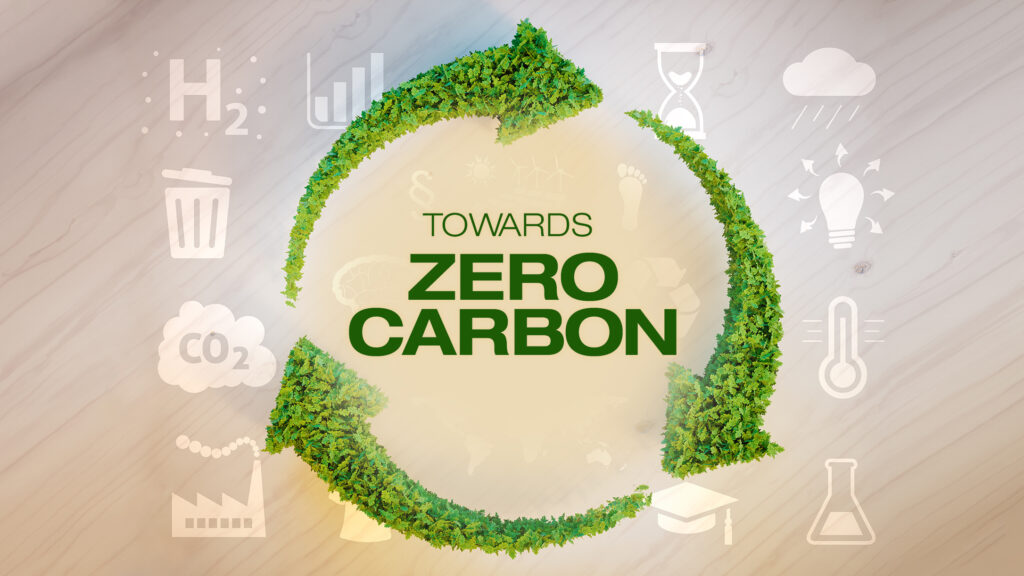Carbon Neutrality

From Waste to Wonder: Achieving Carbon Neutrality Together
Carbon neutral describes the state achieved when an entity that produces carbon emissions removes the same volume of carbon emissions from the Earth’s atmosphere. Reaching carbon neutrality can involve a variety of measures, including energy efficiency initiatives, renewable energy transitions, carbon removal and carbon offset projects.
Why is carbon neutrality important?
Proponents of carbon neutrality efforts say they can play an important role in mitigating climate change and global warming, which are caused by the build-up of greenhouse gas emissions in the atmosphere. In addition to carbon dioxide, greenhouse gases (GHGs) contributing to climate change include methane, nitrous oxide and hydrofluorocarbons.
These emissions are caused largely by human activities, especially the burning of fossil fuels, and have led to significant increases to global temperatures. The European Union climate monitor Copernicus reported 2023 to be the warmest year on record—nearly 1.48 degrees Celsius (2.66 degrees Fahrenheit) warmer than pre-industrial levels.
Carbon neutrality initiatives can help in achieving the goal of net zero emissions—the reduction of all GHG emissions to near zero, with any remaining emissions removed from the atmosphere. However, net zero emissions initiatives typically focus more on emissions reductions than removal. The Science Based Targets initiative (SBTi), a partnership of several global nonprofit organizations, promotes a corporate net zero standard that calls for companies to reduce direct and indirect value-chain emissions by more than 90%.1 When a business or a country takes climate actions that successfully result in net zero emissions, it’s considered to be climate neutral.
What strategies enable carbon neutrality?
Organizations looking to achieve carbon neutrality in their operations and supply chains typically take one or more of the following approaches:
Energy efficiency:
Energy efficiency is the concept of performing of a task using less energy than might otherwise be required. The U.S. Department of Energy refers to energy efficiency as “a vital component in achieving net-zero emissions of carbon dioxide.”2
Energy efficiency improvements can be minor, such as replacing older lightbulbs with new, energy-saving lightbulbs. But improvements can also take the form of larger-scale projects. For example, installing a reflective roof covering and adding insulation throughout a building may keep indoor temperatures lower during hot weather, which would reduce overall energy consumption by HVAC systems. In addition to reducing an entity’s carbon footprint, energy efficiency can lower energy bills, which can help businesses reduce prices for goods and services.
Renewable energy transitions:
Renewable energy is energy generated from natural sources that can be replenished faster than the energy is consumed. It is often called clean energy because most types of renewable energy, once in operation, don’t produce carbon dioxide emissions. (The manufacturing and installation of renewable energy technologies do produce a relatively small carbon footprint.)3
Forms of renewable energy include solar power, wind power, hydropower, geothermal energy and bioenergy. As with energy efficiency, organizations can pursue an array of strategies as they embark on transitioning from fossil fuel sources to renewable energy sources. On-site options include installing solar panels, erecting wind turbines and using geothermal heating and cooling systems.
Where available, organizations can also purchase power directly from local renewable energy providers. In the United States and Europe, organizations also have the option of purchasing certificates representing their investment in green energy. (Proponents of such certificates say they help support and raise awareness of renewable energy transitions. Research indicates, however, that the certificates don’t always encourage more renewable energy infrastructure development, raising concerns over greenwashing—the marketing of misleading information about corporate sustainability.)4
Carbon removal and carbon capture:
CO2 emissions are naturally removed from the atmosphere through carbon sinks. Natural carbon sinks include forests, oceans and wetlands, which absorb carbon dioxide from the air—a process known as sequestration. Humans can support such biological sequestration through reforestation and preserving or restoring wetlands. (Such habitat restoration can also yield the added benefit of protecting biodiversity.)
Other kinds of carbon sequestration also involve human efforts. These include agricultural practices that increase the amount of carbon stored in soils (known as soil carbon sequestration) and direct air capture (DAC). DAC technology removes carbon dioxide directly from the atmosphere through air capture systems that use chemical reactions to filter out CO2 molecules. Though DAC is a particularly expensive carbon removal method, according to the International Energy Agency (IEA), 27 DAC plants were commissioned worldwide as of July 2023.5 Continued innovation in carbon removal is being supported by government programs such as the Carbon Negative Shot initiative6 and the Carbon Dioxide Removal Launchpad.
Some technologies used in carbon removal are similar to those used in carbon capture, utilization and storage (CCUS) projects. CCUS projects, however, are distinct because they capture CO2 emissions at the source, such as a factory or power plant. The captured carbon dioxide can then be compressed and transported for industrial uses or stored underground. More than 500 CCUS projects are under development as of July 2023, according to the IEA.8
Carbon offsets and carbon credits:
To supplement their sustainability efforts and meet the expectations of climate change-conscious stakeholders, organizations often invest in carbon offset projects and carbon credits. These projects can take the form of many of the efforts described above, such as reforestation and renewable energy generation. By investing in the removal or avoidance of GHG emissions, companies are “offsetting” their own emissions.
Join Us in Building a Sustainable Future
we believe that real change starts with action. By investing in our recycling unit, we’re not just addressing the symptoms of plastic pollution – we’re tackling the root cause head-on. Together with our clients and partners, we’re paving the way towards a plastic-neutral world where waste is minimized, resources are maximized, and our planet thrives for generations to come.
Get in Touch
Ready to make a difference? Join us in our mission to eliminate plastic footprints and build a sustainable future.
